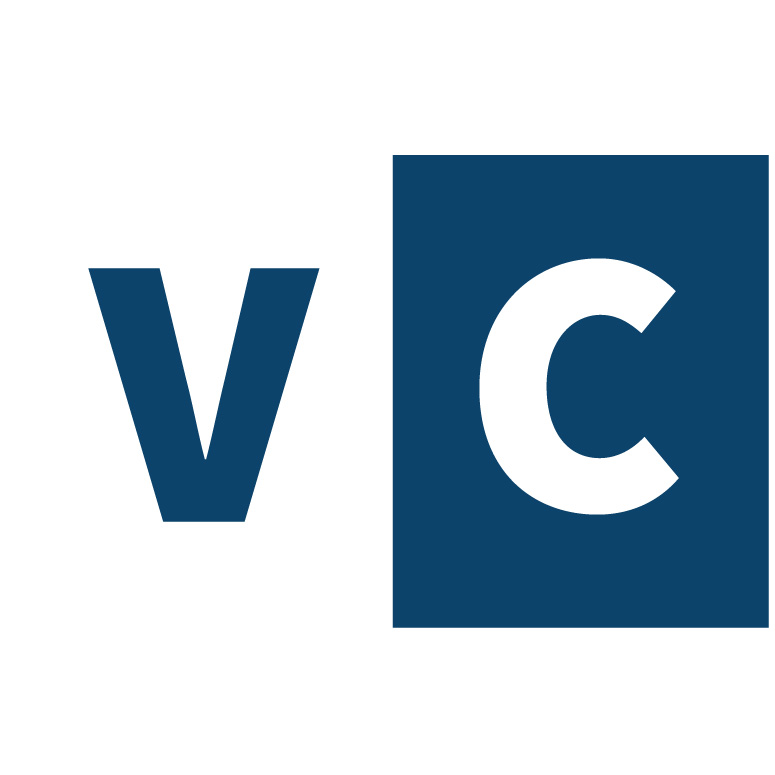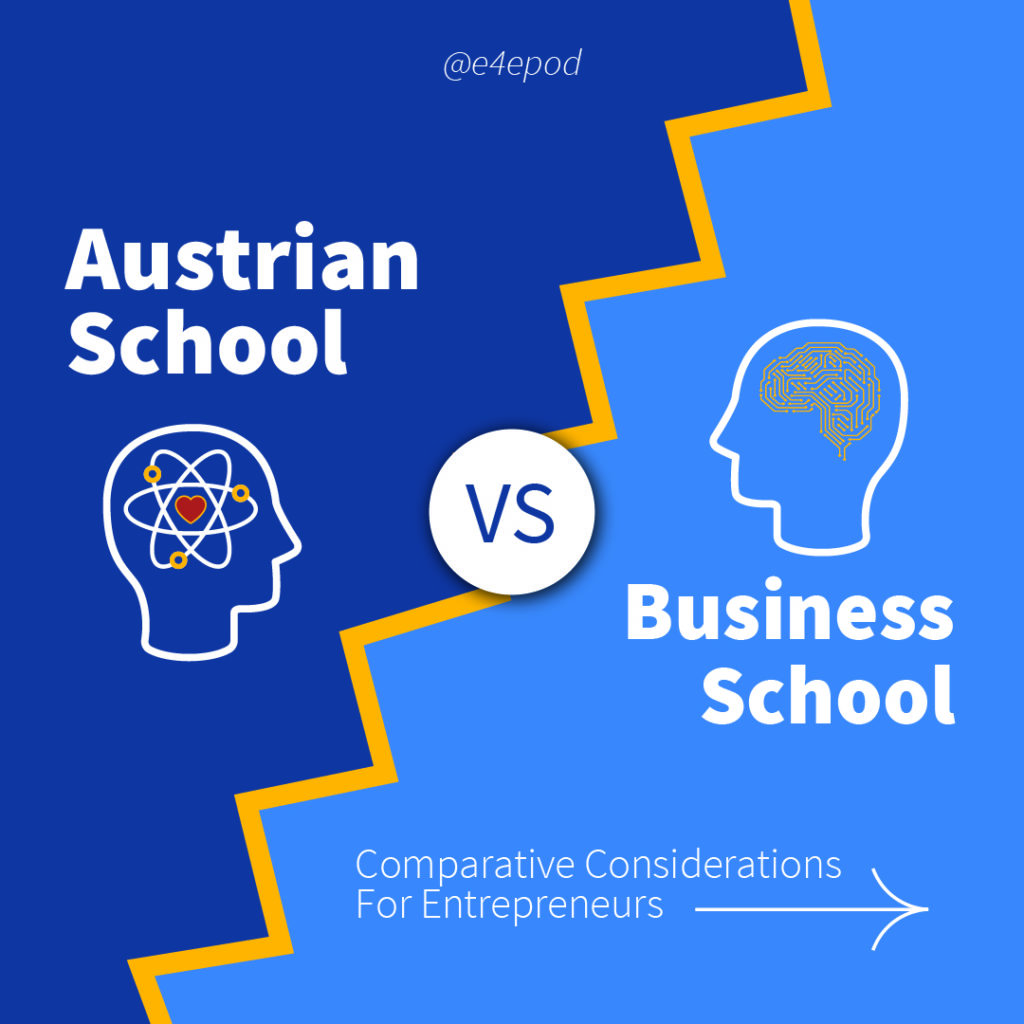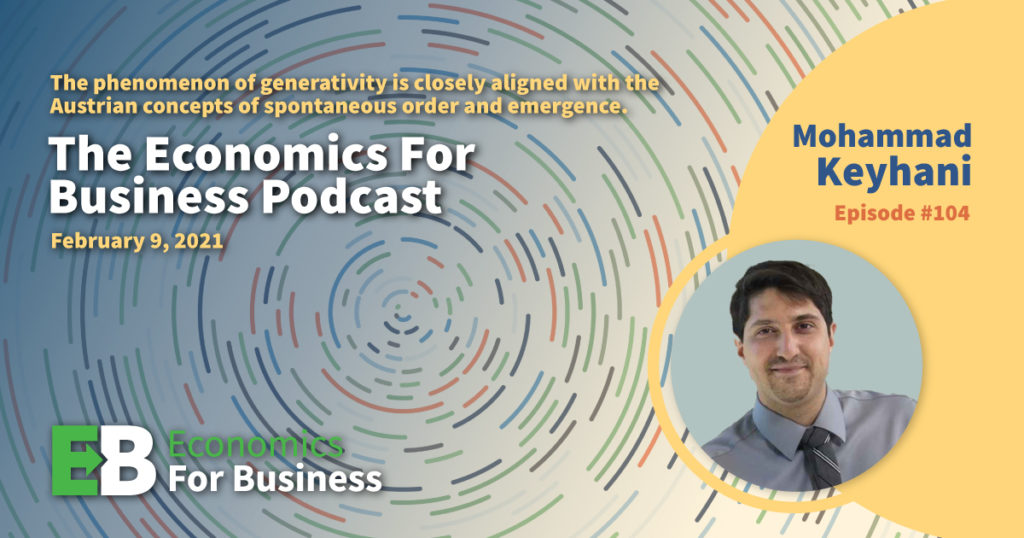The New Economics Of Value And Value Creation.

A breakthrough paper published by Dr. Per Bylund and Dr. Mark Packard in January 2021, titled Subjective Value In Entrepreneurship, points to ten radical shifts in business thinking. We consider each one in turn. This article is number two in our series. (Previous article here.)
There’s classical economics and there’s Austrian economics. There’s classical physics and there’s quantum physics. In each case, the emergence of the new science requires rethinking of the “rules of the game”. In the case of quantum physics, not everything about Newton’s Laws, or even Einstein’s Theory Of Relativity, can be thought of as accurate any more, and the things we think of as existing in spacetime (the three dimensions of space plus the dimension of time) are not everything that exists nor everything that is real. It is the study of energy at the smallest possible scale in quantum physics that reveals new insights and new knowledge. At this level, the rules are different.
The equivalent perspective in Austrian economics comes from methodological individualism – the study of economic energy at its smallest possible scale: the individual, individual choices, and individual transactions. These interactions and transactions roll up into the complex, swirling, ever-changing systems we call firms, markets and, ultimately, economies. But it is the study at the individual level that yields new insights and new knowledge, just as in quantum physics.
It is in this spirit that Dr. Bylund and Dr. Packard approach the subject of economic value. Progress in the world is the creation of new economic value. Who creates it? The answer is not what most people think. Consumers create value. That’s because value is a feeling, the emergent outcome of an experience that the consumer judges to be of value to them. Their assessment occurs in their own mind, after the event of the experience, and is entirely individual. Value is, in other words, subjective. There is no value without consumption.
This realization compels a re-thinking of the concept of value in business. It is typical, today, to talk of businesses as “creating value”, and to think of some firms as creating more value than others as a result of competitive advantage or superior strategy. The methods of measurement for these assessments usually involve financial variables such as profits or stock price appreciation or margins.
But this approach is not accurate, and it’s not right. Businesses, firms and entrepreneurs and their brands and offerings are parties to value generation. They’re just not the creators, because there is no creation without consumption.
So, if they don’t create value, what do they do? They pursue new value on the customer’s behalf and they capture some portion after customers create value, providing themselves (and, by extension their customers) with the sustainability required to continue to offer innovative value propositions in the future.
Here’s how that process works out
Identifying value potential in response to customer signals.
After customers create value in consumption, they evaluate it in comparison to their expectations and to alternative satisfactions they could have chosen. If there is a discrepancy on the downside, they emit a market signal we call dissatisfaction. The genius of customers is to be able to identify potential improvements through this mechanism of dissatisfaction. They are always seeking a better experience, no matter how good the latest one might be. In this way, they are the driver of innovation and economic growth.
But dissatisfaction signals are not always easy to interpret. The famous observation attributed to Henry Ford applies: if I’d asked them what they want, they’d have told me “faster horses”. Ford’s customers were dissatisfied with the transportation experience offered by the best horses (and carts) of the time, but couldn’t wish for the inexpensive automobiles that Ford eventually developed.
We could say that Ford identified the value potential in the desire for faster horses. Consumer signals require interpretation, and that constitutes one of the major contributions, and major skills, of entrepreneurial businesses.
Value Facilitation
Once value potential is identified and confirmed, the role of business is to make it easy, convenient and enjoyable for customers to experience the new value. Value facilitation means taking a proposed new or improved product or service all the way to the point where the customer can buy it and experience it. We might say that value facilitation is the traversing of the last mile and the last foot into the customer’s domain.
Facilitating value means making the least amount of work for the customer. We don’t think about work as something the customer has to do. But the concept is important in identifying barriers to purchase and barriers to usage. If the customer has to learn new software, a new interface that doesn’t work the way they’re used to, or a new car dealership whose customer service process is different, it’s all work. If a customer has to drive to a store instead of accepting delivery at the office or home, it’s more work. If a truck requires more maintenance, it’s more customer work. If the customer must do some research to find out about a brand that was previously unknown to them, it’s more work. Economic science recognizes the disutility of work. If there’s a possibility of achieving a benefit with less work, that’s the benefit the customer will choose.
Value facilitation is the business activity of minimizing the amount of work the customer must do to experience the benefit on offer, reducing the barriers to purchase and usage to zero.
Capturing value
When the value facilitation process is taken to the max – the last foot – the value experience is ready for capture.
On the customer side of the transaction, the final step is translation of their value assessment (which includes the weighing of multiple value perspectives, and especially relative value compared with what else they could use their money for) into a monetary expression we call willingness to pay. The willingness to pay means the customer perceives more value in the potential experience on offer than in holding on to their cash or using that cash for alternative purposes. It can only occur when the benefit they anticipate exceeds the price asked by the entrepreneurial business making the offer. There might be some negotiation (special promotions, discounts, coupons, incentives, and so on) before the willingness to pay is finalized and expressed in a purchase.
The customer captures value by buying and using and experiencing what they bought. This might be immediate (like an ice cream cone) or delayed or spread over time (like a car).
The business captures value when they receive the cash, and subtract all the costs of production. The quality of the business model determines how much of the value the business captures, and how much is lost to costs or shared with partners in the value delivery network or supply chain. Some business models capture more value than others. For example, selling direct to consumers via the internet usually empowers sellers to capture more margin than going through a 3rd party retailer and wholesaler network and sharing margin with them. There’s both more value for the consumer (delivery versus pick-up, speed, convenience, etc) and more to be captured by the producer.
Besides negotiating price, the producer’s role at this stage is to monitor the customer’s value experience – did it go smoothly, did it meet expectations, are there any dissatisfaction signals to be picked up?
Value agility – strong feedback loops and responsive innovation.
Value facilitation is never complete. The entrepreneurial business must become adept at reading consumer signals after the value experience and value capture. This is accomplished by keeping open the feedback loops from the end-user to the business – contacting, monitoring, listening, processing, and ensuring that the feedback enters and is absorbed by all parts of the business, not just the call center or the marketing department. Every part of the business should be entrepreneurially empowered to respond to end-user reactions and signals. A firm with value agility is organized differently, with every possible touchpoint and listening point ready with a response.
This value agility and readiness spontaneously organizes continuous innovation, making changes to firm behavior, policies, outputs, services and delivery to aim for the best possible accommodation of changing and evolving customer requirements. Continuous change is the norm for the entrepreneurially empowered firm.
Quantum Economics
In quantum physics, entities in a quantum state emit what are called “offer waves”. Other quantum entities absorb these offer waves and send out a “confirmation wave”. When the offer wave and confirmation wave match, a real-time event occurs as a result, although very rarely, because the quantum states and offer waves are continuously changing. The quantum states and the offer wave and confirmation wave are real, but they do not occur in the dimensions of spacetime (the three dimensions of space plus the dimension of time that are the “container” for everything we can observe and experience with our senses). They occur in quantumland – a land of probabilities, possibilities and potential that are not yet quite real to the human observer.
The economics of value can be thought of in the same way. Consumer dissatisfaction is the emission of offer waves: I will be your customer if you can solve my dissatisfaction. Entrepreneurial action can be thought off as the confirmation wave, sometimes but rarely providing the right response and precipitating a real event, a transaction.
There is no concept of cause-and-effect or stimulus-and-response. The offer wave and confirmation wave exchanges are occurring simultaneously, at all times, in all directions, amidst continuous change. Professors Bylund and Packard painted the picture of consumer and entrepreneur co-navigating a sea of uncertainty in a shared quest for a higher value state. Each has a role, but neither is the stimulator or responder. Both of them play both roles at the same time. The new rules of value require us to think differently than we’ve been taught in the past.







Responses